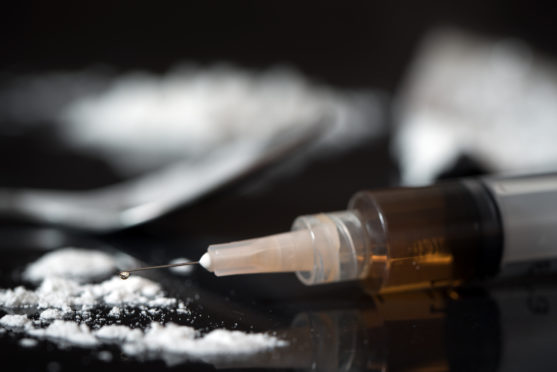
More than 1,100 people died from drugs in Scotland last year, new figures indicate – the worst total since records began, and higher than the reported rate for any other EU country.
There were 1,187 drug-related deaths registered in 2018, above 1,000 for the first time and 253 (27%) more than the previous year.
The National Records of Scotland statistics indicate Scotland’s drug death rate is nearly triple that of the UK, and higher than in any other country in the EU.
It is at the highest level since current records began in 1996 and more than double the 2008 figure of 574.
We’ve published the latest drug-related deaths in #Scotland these show that 1,187 people died in 2018 – the largest number since the series began in 1996. #NRSStats https://t.co/TMUu3yhUoA pic.twitter.com/OszJw5Fptc
— NatRecordsScot (@NatRecordsScot) July 16, 2019
Scotland’s Public Health Minister Joe FitzPatrick said the figure is “shocking”, and said innovative and bold new approaches are needed to save lives. He also repeated calls for the UK Government to enable the creation of safer drug consumption rooms.
NHS Greater Glasgow and Clyde accounted for the greatest proportion of drug related deaths with a third (394), followed by NHS Lothian with 152 (13%) and NHS Lanarkshire at 130 (11%).
Deaths from opiates or opioids, such as heroin, morphine, or methadone, were implicated in, or potentially contributed to, 1,021 deaths.
For benzodiazepines such as diazepam and etizolam, this figure was 792.
Men accounted for the majority (72%) of the drug-related deaths. The 35-44 age group was associated with the most deaths at 442, followed by those aged 45-54 (345).
Public Health Minister @JoeFitzSNP has responded to the latest statistics on drug-related deaths in 2018 https://t.co/FPcH2I2N6O pic.twitter.com/p4r4wKmrcL
— Scot Gov Health (@scotgovhealth) July 16, 2019
Mr FitzPatrick said: “The number of people who have lost their lives because of drug use is shocking.
“It is vital this tragedy is treated as a public health issue, and we are prepared to take innovative and bold measures in order to save the lives of those most at risk.
“Last week, I gave evidence to the Scottish Affairs Committee and I asked for help in persuading the UK Government to either act now to enable us to implement a range of public health-focused responses – including the introduction of supervised drug consumption facilities – or devolve the power to the Scottish Parliament so that we can act.
“I want to ensure that the work of the new taskforce which I have established is driven by strong evidence and the voices of those with experience of using drugs, and their families, are heard.
“I am determined to shape our services in every walk of life to prevent harm and reduce the appalling number of deaths.
“So I will give consideration to any proposals they bring forward which may help to tackle this issue and, ultimately, save lives.”

Enjoy the convenience of having The Sunday Post delivered as a digital ePaper straight to your smartphone, tablet or computer.
Subscribe for only £5.49 a month and enjoy all the benefits of the printed paper as a digital replica.
Subscribe